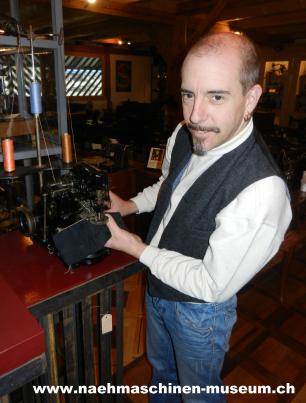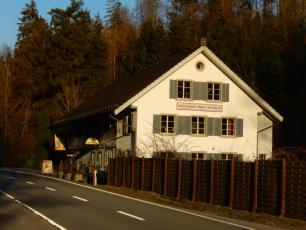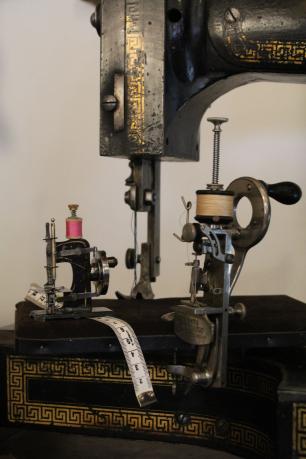A dream comes true

When Roni Schmied, aged 11, found an old sewing machine on a waste heap and dragged it home, the basis of a collectors-passion was laid; the passion and the collection has grown until the present day.
Soon the idea to make his collection accessible to interested people was born. However, it took three decades for the dream to be realised.
After several moves and a large renovation, the collection finally found a suitable home in a building, that was part of the old factory-complex "Pilgersteg" and formerly used as the stables and living quarters of the wagoner. It was built in the mid 19th century, located in the "Grundtal" and classified as a historical building.
The Museum

With great effort and great attention to detail, a space was created where the sewing machines can be looked at and admired. These machines represent examples of most of the historical and technical developments. The hundreds of machines give an overview of the different fields of application - from simple models to complex and special machines, from different countries, from a simple tool to a status symbol, from the toy to the industrial machine - but always a masterpiece of mechanics.
Related crafts, such as for shoemaking and manufacturing of fur objects and clothing, are also represented. The collection of sewing machines is completed by many other interesting accessories.
Some of the exhibits are rarities. They might be "one-offs" or one of only a few examples in existence around the world. Some have been restored, some still carry the scars of the decades.
When you visit our museum let us take you to a fascinating journey through the history of technical development and social change, of progress and aesthetics of the past 200 years. During a guided tour we will be happy to give you more detailed information and with practical demonstrations we give you an overview of how the different sewing machines work.
If you want to know why the Princess of Wales, the Queen of Hearts, the oldest and first ‘Opel’ model and "Christopher Columbus" can be found in our display, or if you would like us to show you something "grandiosa" or "indecent" ... come and visit us!
From needle and thread to the sewing machine

Sewing, one of the oldest handcrafts, was revolutionized during the period of industrialization. Around 1790, the first attempts were made to mechanize sewing. The production of the sewing machine rapidly became a lucrative market, because the sewing machine was one of the first mechanical devices that could be sold all over the world and to practically every household as well as to important industries. From the mid-19th century on some models were built in larger production units.
The development of the sewing machine, considered in the field of technology, as well as in a social and historical context, is an excellent example of development and progress. The development of the sewing machine was in part the driving force in areas such as patent law (and its avoidance) and, among others, the development of payment by instalments ("Leasing" was originally introduced for buying a sewing machine.)
A sewing machine was considered both as progress in productivity, and conversely as a danger to the craft of hand stitching. It was both a tool and a sign of wealth.

 INFO
INFO